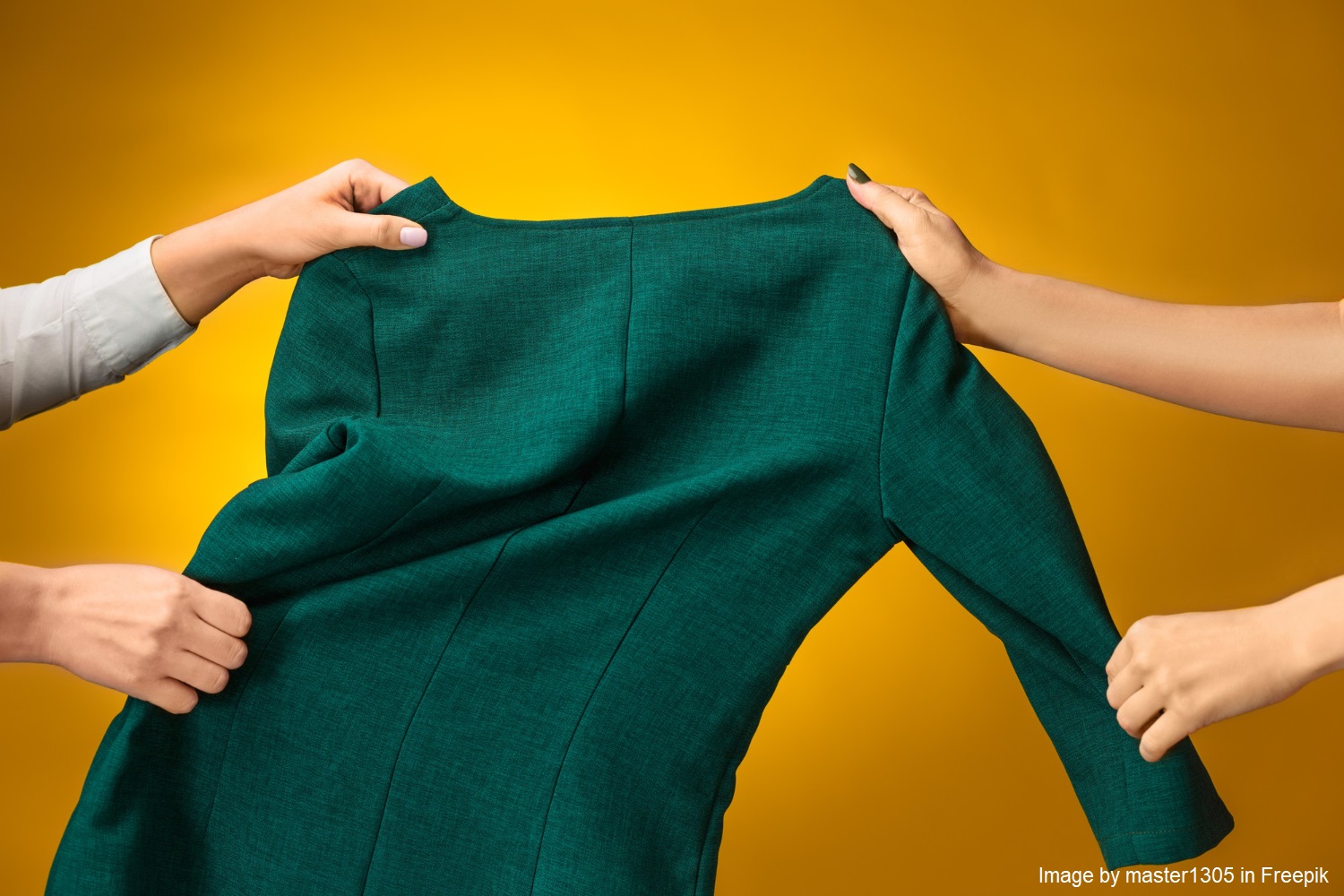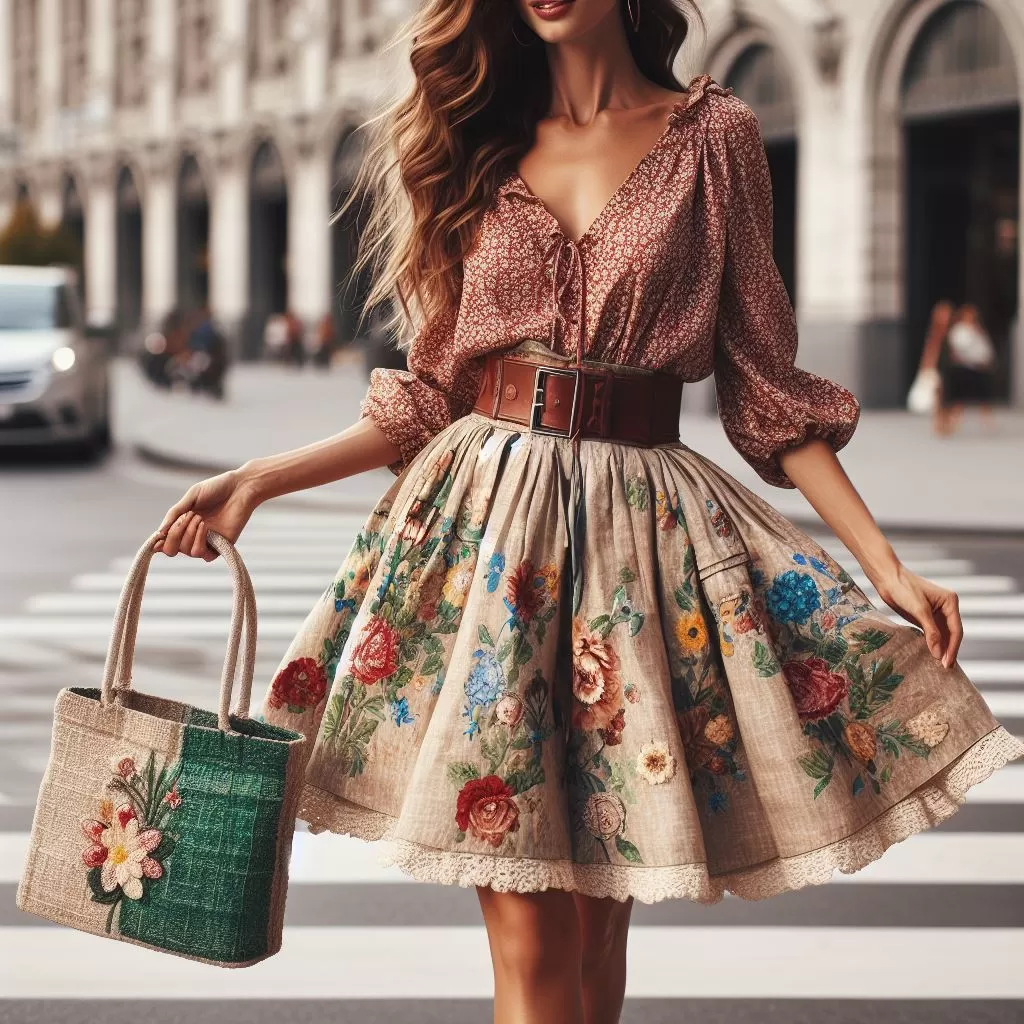Fashion is enjoyable and expressive, and yes, it can feel overwhelming with all the “stuff” and ethical choices. People are becoming more aware of how fashion affects the environment. As a result, two major movements have emerged: vegan fashion and eco-friendly fashion. Both aim to make our wardrobes kinder to the planet, but take different routes. So, how do you decide which path to follow in this “Great Green Debate”?
This “Great Green Debate” can leave us scratching our heads. Can we make truly conscious clothing choices in a world full of mixed messages? Luckily, this article is your guide! We’ll examine the distinctions between eco-friendly and cruelty-free fashion, including their genuine meanings and motivations.
But wait, there’s more! We’ll also delve into eco-friendly practices like sustainable materials, water conservation, and fair labor.
Plus, we’ll share some handy tips to help you navigate this whole “green fashion” thing and make choices that align with your values. So buckle up and prepare to improve both your style and the planet!
Jump To:
Toggle
What is Vegan Fashion?
Many ethically conscious consumers find vegan fashion refreshing. It places a high priority on abstaining from animal abuse. This is achieved by eliminating leather, wool, silk, and other products originating from animals.
Instead, vegan fashion embraces innovative materials like organic cotton, recycled polyester, and even plant-based leathers made from pineapple (Piñatex) or mushrooms (mycelium).
However, it’s important to be mindful of the environmental impact of some synthetic alternatives. While vegan fashion protects animals, materials like PVC and polyurethane can contribute to pollution during production or be difficult to biodegrade.

What is Eco-Friendly Fashion?
Sustainable fashion and eco-friendly fashion are one and the same, often used interchangeably. I discussed the concept of sustainable fashion in my previous article, Fashion Revolution: Why Sustainable Fashion is on the Rise.
To recap, eco-friendly fashion goes beyond just the materials used in clothing. It takes a holistic approach, considering the entire lifecycle of a garment. Featuring sustainable materials like organic cotton, hemp, bamboo, and recycled fabrics.
Eco-conscious brands also highlight ethical labor practices, reduce water usage in production, and strive for minimal waste. Choosing eco-friendly fashion allows you to actively contribute to a more sustainable future. You’ll be reducing pollution, conserving resources, and supporting responsible labor practices.
It’s worth noting, however, that some eco-friendly brands might use responsibly-sourced animal materials like wool or leather. This might not be ideal if you’re aiming for a purely vegan wardrobe.

How to Choose between Vegan and Eco-friendly Clothing
Here are some things to consider when deciding between vegan and eco-friendly clothing:
1. Personal Values
If animal welfare is your top priority, vegan fashion is the way to go. If you’re more focused on reducing your environmental impact, eco-friendly fashion might be your best bet.
2. Brand Transparency
Look for brands with a strong commitment to transparency about their practices. Certifications are a positive indicator of this commitment.
For example, certifications like GOTS and Fair Trade show that a brand is committed to ethical and sustainable practices.
3. Durability and Life Cycle
Consider how long the clothing will last. For instance, organic cotton is a durable eco-friendly material.
On the other hand, some types of rayon, a vegan alternative, might not be as long-lasting. In the long run, choosing durable clothing minimizes waste and can be a more sustainable choice.
4. Overall Footprint
Think about the total impact of the materials and production processes. This includes the resources used, the waste generated, and what happens to the item at the end of its life.
It’s not always a clear-cut decision, and there’s no single “perfect” choice. Sometimes, a blend of both vegan and eco-friendly fashion might be the most practical approach.

Tips for Navigating the Green Debate
Ready to make more informed and ethical fashion choices? Here are some practical tips:
Do Your Homework
Firstly, before you buy, research brands to understand their sustainability practices. Check their websites and social media for transparency initiatives.
Additionally, look for independent ratings on websites like the Sustainable Apparel Coalition or ethical fashion blogs.
I personally love Good on You, a website for sustainability ratings. They provide easy-to-understand brand ratings based on environmental and social impact.
Quality Over Quantity
Secondly, invest in high-quality pieces that will last longer, reducing the need for frequent replacements. Look for clothes with sturdy seams, well-constructed buttons and zippers, and natural, breathable materials like organic cotton or linen.
It is important to note that, while these might have a higher upfront cost, they’ll likely save you money in the long run compared to constantly replacing lower-quality clothing.
Care and Repair
Thirdly, by taking good care of your clothes, you extend their lifespan and reduce waste. Develop the habit of washing clothes on gentle cycles and air-drying them whenever possible.
Learn some simple repair techniques like replacing buttons or fixing small tears. For more complex repairs, consider seeking professional tailoring or repair services to give your favorite pieces a new lease on life.
Second-Hand and Vintage
Lastly, embrace second-hand and vintage clothing to cut down on new production and reduce waste. This doesn’t just benefit the environment;it can also be a treasure trove for unique styles and amazing finds at affordable prices.
Look into local thrift stores, consignment shops, or online platforms like ThredUp to discover hidden gems and give pre-loved clothing a second chance.
Follow these tips, so you can better handle this domain of eco-friendly and vegan fashion with confidence!
Conclusion
In the “Great Green Debate” of vegan vs. eco-friendly fashion, there’s no one-size-fits-all answer. Both paths offer valuable ways to reduce the negative impact of fashion on our world. The key is to understand the differences, consider your personal values, and make choices that feel right for you.
Whether you’re leaning towards cruelty-free clothing or prioritizing sustainability, the most important thing is to be a conscious consumer. You can make a meaningful difference by conducting your research, focusing on quality, extending the life of your clothes, and exploring second-hand options.
Key Takeaways:
- Vegan fashion avoids all animal-derived materials and promotes cruelty-free clothing.
- Eco-friendly fashion focuses on reducing the overall environmental impact through sustainable practices.
- Consider your values, brand transparency, durability, and overall footprint when making fashion choices.
- Tips include researching brands, choosing quality over quantity, caring for your clothes, and considering second-hand options.
With growing consumer awareness and innovation in sustainable materials, the future of fashion is looking brighter. By making conscious choices today, we can all contribute to a more ethical and environmentally responsible industry.
What’s your take on the vegan vs. eco-friendly fashion debate? Please share your views and experiences in the comments below!



